- Home
- Orhan Pamuk
Istanbul Page 9
Istanbul Read online
Page 9
As early as 1580, Montaigne argued that there was no honor in the emotion he called tristesse. (He used this word even though he knew himself to be a melancholic; years later, Flaubert, likewise diagnosed, would do the same.) Montaigne saw tristesse as the enemy of self-reliant rationalism and individualism. Tristesse, in his view, did not deserve to be set in capital letters alongside the great virtues, Wisdom, Virtue, and Conscience; he approved of the Italian association of tristezza with all manner of madness and injury, the source of countless evils.
Montaigne’s own sorrow was as solitary as mourning, eating away at the mind of a man who lives alone with his books. But the hüzün of Istanbul is something the entire city feels together and affirms as one. Just like the heroes of Tanpınar’s Peace, the greatest novel ever written about Istanbul: Because of the hüzün they derive from the city’s history, they are broken and condemned to defeat. It is hüzün which ordains that no love will end peacefully. Just as in the old black-and-white films—even in the most affecting and authentic love stories—if the setting is Istanbul, it is clear from the start that the hüzün the boy has carried with him since birth will lead the story into melodrama.
In these black-and-white films, as in works of “high art” like Tanpınar’s Peace, the moment of identification is always the same. It is when the heroes have withdrawn into themselves, when they have failed to show enough determination or enterprise, submitting instead to the conditions imposed on them by history and society, that we embrace them, and at that same moment so does the whole city. No matter how picturesque, how famous the scenery in the drama unfolding on the city’s black-and-white streets, it too will shimmer with hüzün. Sometimes, when I am changing channels on television and happen upon one of these films at some random point in the middle, a curious thought occurs to me. When I see the hero walking along the cobblestones of a poor neighborhood, gazing up at the lights in the windows of a wooden house and thinking of his beloved, who is of course about to marry someone else, or when the hero answers a rich and powerful factory owner with humble pride and, resolving to accept life as it is, turns to gaze at a black-and-white Bosphorus, it seems to me that hüzün does not come from the hero’s broken, painful story or from his failure to win the hand of the woman he loves; rather, it is almost as if the hüzün that infuses the city’s sights and streets and famous views has seeped into the hero’s heart to break his will. It then seems that to know the hero’s story and share his melancholy I need only to look at the view. For the heroes of these popular films, as for the heroes of Tanpınar’s Peace, there are only two ways to face the impasse: Either they go for a walk along the Bosphorus or they head off into the back streets of the city to gaze at its ruins.
The hero’s only resort is the communal resort. But for those Istanbul writers and poets who are excited by western culture and wish to engage with the contemporary world, the matter is more complex still. Along with the sense of community that hüzün brings, they also aspire to the rationalism of Montaigne and to the emotional solitude of Thoreau. In the early years of the twentieth century, some drew upon all these influences to create an image of Istanbul that is, it must be said, still part of the city and so part of my story too. I wrote this book in constant—and sometimes fierce—dialogue with four lonely authors who (after voracious reading, long hesitant discussion, and meandering walks strewn with coincidences) gave modern Istanbul its melancholy.
CHAPTER ELEVEN
Four Lonely Melancholic Writers
I knew little of these writers as a child. The one I knew best was the great fat poet, Yahya Kemal: I’d read a few of his poems, which were famous through the country. I knew another, the popular historian Reşat Ekrem Koçu, from the history supplements in newspapers—I’d been very interested in the illustrations of Ottoman torture techniques that accompanied his articles. By the time I was ten, I knew all their names because their books were in my father’s library. But they still had no influence on my developing ideas about Istanbul. When I was born, all four were in good health and living within a half-hour walk of where I lived. By the time I was ten, all but one were dead and I’d never seen any of them in person.
In later years, when I was reinventing the Istanbul of my childhood with the black-and-white pictures in my mind, elements of these writers’ Istanbul blended together, and it became impossible to think about the city, even my own city, without thinking of them all. For a time, when I was thirty-five and dreaming of writing a great novel about Istanbul along the lines of Ulysses, I used to enjoy imagining these four writers wandering about the same streets that I wandered as a child. I knew, for example, that the fat poet often ate at Abdullah Efendi Restaurant in Beyoğlu, where during a certain period my grandmother also went to eat once a week, only to return home on each occasion with petulant complaints about the food. I liked to imagine the celebrated poet eating his midday meal as Koçu the historian, searching for material for his Istanbul Encyclopedia, passed in front of the window. The historian journalist was known to have a soft spot for beautiful youths, so I would imagine a lovely young paper boy selling him a newspaper in which Tanpınar the novelist had an article. I would imagine that, at the very same moment, the white-gloved Bosphorus memoirist Abdülhak Şinasi Hisar, a slight man who seldom left home and was obsessed with cleanliness, was engaged in a quarrel with an offal dealer who had failed to wrap the livers Hisar had bought for his cat in a clean newspaper. I imagined all four of my heroes standing on the same corner at the exact same time, walking down the same alleyways in the same rainstorms, their paths occasionally crossing.
I would open up the famous insurance maps that the Croatian Pervitich did of the Beyoğlu-Taksim-Cihangir-Galata area so that I could see every street, every building that my heroes would have passed, and when my memory failed me I would dream up the details of every florist, coffeehouse, pudding shop, and meyhane they might have frequented. I’d conjure up the food smells in the shops; the rough talk, smoke, and alcohol fumes in the meyhanes; the lines of the newspapers in the coffeehouses, read and reread and crumpled, and the posters on the walls; the street vendors; the crawling letters of news headlines once visible at the top of a big apartment house (now demolished) on the edge of Taksim Square—these would be my heroes’ shared points of reference. Whenever I think of these writers together, I am reminded that what gives a city its special character is not just its topography or its buildings but rather the sum total of every chance encounter, every memory, letter, color, and image jostling in its inhabitants’ crowded memories after they have been living, like me, on the same streets for fifty years. That’s when I daydream that I too might have had chance encounters with these four melancholic writers at some point during my childhood.
I would have crossed paths with the novelist Tanpınar, the writer with whom I feel the closest bond, during my earliest excursions to Taksim with my mother. We often went to the French Hachette Bookstore in Tünel, and so did he. As it happened, the novelist (whose nickname was “Down at Heel”) lived right across the street from this bookstore, in a little room at the Narmanlı Buildings. Just after I was born, while the Pamuk Apartments were still under construction, we lived in the Ongan Apartments in Ayazpaşa, which was just across the street from the Park Hotel, where Tanpınar’s mentor and former teacher, Yahya Kemal, would spend his final years. Would the novelist Tanpınar not have been paying regular evening visits to Yahya Kemal in the Park Hotel while I was living across the street? I could also have crossed paths with them later, after we moved to Nişantaşı, because my mother often went to the Park Hotel Patisserie to buy cakes. Abdülhak Şinasi Hisar, whose Bosphorus memoirs I’ve mentioned, often came to Beyoğlu to shop and dine, as did the popular historian Koçu. I might have crossed paths with them too.
I am not unaware of acting like a starstruck fan who takes details from the lives and films of his favorite stars and uses them to imagine coincidences and chance encounters. But it is these four heroes, whom I will discuss fr
om time to time in this book, whose poems, novels, stories, articles, memoirs, and encyclopedias opened my eyes to the soul of the city in which I live. For these four melancholic writers drew their strength from the tensions between the past and the present, or between what Westerners like to call East and West; they are the ones who taught me how to reconcile my love for modern art and western literature with the culture of the city in which I live.
All these writers were, at one point in their lives, dazzled by the brilliance of western (and particularly French) art and literature. The poet Yahya Kemal spent nine years in Paris, and it was from the poetry of Verlaine and Mallarmé that he drew the idea of “pure poetry” that he would adapt to his own purposes later on, when he went in search of a “nationalist” poetics. Tanpınar, who looked up to Yahya Kemal almost as a father, was an admirer of the same poets and of Valéry too. And A. Ş. Hisar, in common with Yahya Kemal and Tanpınar, held André Gide in the highest esteem. It was from Théophile Gautier, another author greatly admired by Yahya Kemal, that Tanpınar learned how to put a landscape into words.
The great and sometimes almost childish esteem in which these writers held French literature in particular and western culture in general during their youths informed their modern—western—approach to their own work. They wanted to write like Frenchmen, of this there is no doubt. But in a corner of their minds they also knew that, if they wrote exactly like Westerners, they would not be as original as the western writers they so admired. For one lesson they’d taken from French culture and French ideas about modern literature was that great writing is original, authentic, and truthful. They were vexed by contradictions they felt between these two injunctions—to be western and yet, at the same time, to be authentic—and this unease can be heard even in their earliest works.
Something else they learned from writers like Gautier and Mallarmé, which helped them in their efforts to achieve truth and originality, was the concept of art for art’s sake or “pure poetry.” Other poets and novelists of their generation were reading different French authors with the same dazzlement, but the lesson they derived was not the value of authenticity but the value of work that was useful and instructive. This too was perilous, as it propelled writers either along a path into didactic literature or into the rough-and-tumble of politics. But while this latter group of writers were playing around with ideals gleaned from Hugo and Zola, writers like Yahya Kemal, Tanpınar, and Abdülhak Şinasi Hisar were asking themselves how to profit from the ideas of Verlaine, Mallarmé, and Proust. Their principal constraint in this pursuit was domestic politics—during their youths they had witnessed the fall of the Ottoman Empire, followed by the days when Turkey seemed doomed to become a colony of the West, and then came the Republic and the age of nationalism.
From the aesthetics they had acquired in France, they knew enough to realize that in Turkey they would never achieve a voice as strong and authentic as Mallarmé’s or Proust’s. But after long deliberation they found an important and authentic subject: the decline and fall of the great empire into which they were born. Their deep understanding of Ottoman civilization and its irreversible decline helped them avoid the traps of watered-down nostalgia, simple historic pride, or the virulent nationalism and communitarianism to which so many of their contemporaries succumbed, and it became the basis for the beginnings of a poetics of the past. The Istanbul in which they lived was a city littered with the ruins of the great fall, but it was their city. If they gave themselves to melancholic poems about loss and destruction, they would, they discovered, find a voice all their own.
In “The Philosophy of Composition,” Edgar Allan Poe, reasoning along the same cold-blooded lines as Coleridge, wrote that his main concern while composing “The Raven” was to create a “melancholic tone.” “I asked myself—of all melancholy topics, what, according to the universal understanding of mankind, is the most melancholy? Death was the obvious reply.” As he went on to explain, with the practicality of an engineer, this was why he chose to place a very beautiful dead girl at the heart of the poem.
The four writers who crossed my path so many times in my imaginary childhood never consciously followed Poe’s logic, but they did believe that they could find their own authentic voice only if they looked to their city’s past and wrote of the melancholy it inspired. When they recalled the splendor of old Istanbul, when their eyes lit on a dead beauty lying by the wayside, when they wrote about the ruins that surrounded them, they gave the past a poetic grandeur. As it happened, this eclectic vision, which I’ll call “the melancholy of the ruins,” made them seem nationalist in a way that suited the oppressive state, while also saving them from the full force of the authoritarian decrees that befell their contemporaries with an equal interest in history. What allows us to enjoy Nabokov’s memoirs without becoming depressed at the flawlessness of his rich aristocratic family is that he makes it clear we are listening to a writer speaking a different language, from a different age: We are always aware that this age has long since vanished, never to return. The time and memory games so suited to the Bergsonian fashions of the era could evoke the fleeting illusion that, as an aesthetic pleasure at least, the past was still alive; by applying these same techniques, our four melancholic writers conjured old Istanbul out of its ruins.
Indeed, they present this illusion as a game, a game that merges pain and death with beauty. But their starting point is that the beauties of the past are lost forever.
When Abdülhak Şinasi Hisar mourns for the thing he calls “Bosphorus civilization,” he sometimes stops short and (almost as if the thought has just occurred to him) remarks that “all civilizations are as transitory as the people now in cemeteries. And just as we must die, so too must we accept that there is no return to a civilization whose time has come and gone.” What unites these four writers is the poetry they made of this knowledge and the melancholy attending to it.
In the period just after the First World War, Yahya Kemal and Tanpınar went in search of an image of melancholic “Ottoman-Turkish” Istanbul. When, lacking Turkish precedents, they followed the footsteps of western travelers, wandering around the ruins of the city’s poor neighborhoods, the population of Istanbul was hardly half a million. By the end of the 1950s, when I was starting school, it had roughly doubled. By 2000, it had grown to ten million. If we put the Old City, Pera, and the Bosphorus to one side, today’s Istanbul is ten times bigger than the city these writers knew.
Still, the image most residents have of their city depends very much on the images these writers created. For no competing image of Istanbul has risen, not from the native-born and not from the newcomers of the past fifty years, the immigrants who live beyond the Bosphorus, the Old City, and the historic neighborhoods. You often hear people complaining that “there are ten-year-old children in those areas who’ve never seen the Bosphorus,” and studies have shown that those living in the city’s vast new suburbs don’t feel themselves to be İstanbullus. Caught as the city is between traditional and western culture, inhabited as it is by an ultra-rich minority and an impoverished majority, overrun as it is by wave after wave of immigrants, divided as it has always been along the lines of its many ethnic groups, Istanbul is a place where, for the past 150 years, no one has been able to feel completely at home.
Our four melancholic writers have been attacked for fretting too much about the Ottomans and the past during the first four decades of the Republic when, according to these same critics, they ought to have been constructing westward-looking utopias. For this they have been branded “reactionary.”
In fact, their aim was to draw inspiration from both traditions at once—the two great cultures that journalists coarsely refer to as East and West. They could share in the communal spirit of the city by embracing its melancholy, and at the same time they sought to express this communal melancholy, this hüzün—to bring out the poetry in their city—by seeing Istanbul through the eyes of a Westerner. To act contrary to the dictates of society an
d the state, to be “eastern” when asked to be “western” and “western” when they were expected to be “eastern”—these might have been instinctive gestures but they opened up a space that gave them the protective solitude they so craved.
The memoirist Abdülhak Şinasi Hisar, the poet Yahya Kemal, the novelist Ahmet Hamdi Tanpınar, and the journalist-historian Reşat Ekrem Koçu—all four melancholic writers lived and died alone, never marrying. With the exception of Yahya Kemal, they died without achieving their dreams. Not only did they leave behind unfinished books, but the books they did publish during their lifetimes never reached the readers these men had sought. As for Yahya Kemal, Istanbul’s greatest and most influential poet, throughout his life he refused to publish any book at all.
CHAPTER TWELVE
My Grandmother
If anyone asked, my grandmother would say she was in favor of Atatürk’s westernizing project, but in fact—and in this she was like everyone else in the city—neither the East nor the West interested her. She seldom left the house, after all. Like most people who live comfortably in a city, she had no interest in its monuments, history, or “beauties”—this despite the fact that she’d studied to be a history teacher. After becoming engaged to my grandfather, and before marrying him, she did something rather brave in Istanbul in 1917—she went out with him to a restaurant. Because they were sitting opposite each other at a table, and because they were served drinks, I like to imagine they were in a restaurant café in Pera; and when my grandfather asked her what she’d like to drink (meaning tea or lemonade), she, thinking he was offering her something stronger, answered him harshly.

 Snow
Snow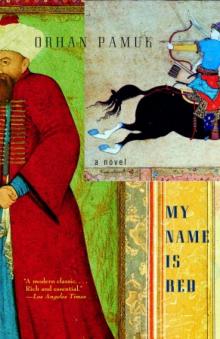 My Name is Red
My Name is Red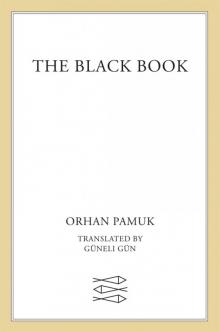 The Black Book
The Black Book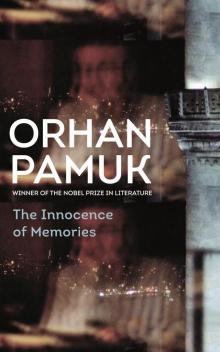 The Innocence of Memories
The Innocence of Memories The White Castle
The White Castle Other Colors
Other Colors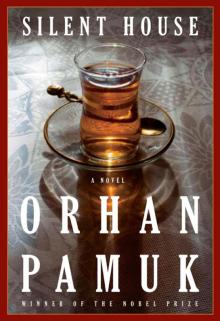 Silent House
Silent House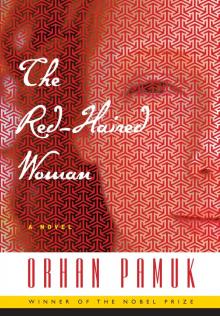 The Red-Haired Woman
The Red-Haired Woman The Museum of Innocence
The Museum of Innocence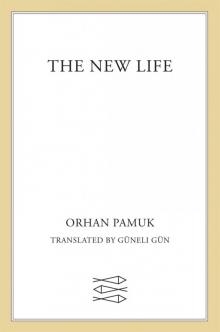 The New Life
The New Life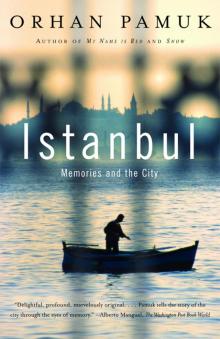 Istanbul
Istanbul